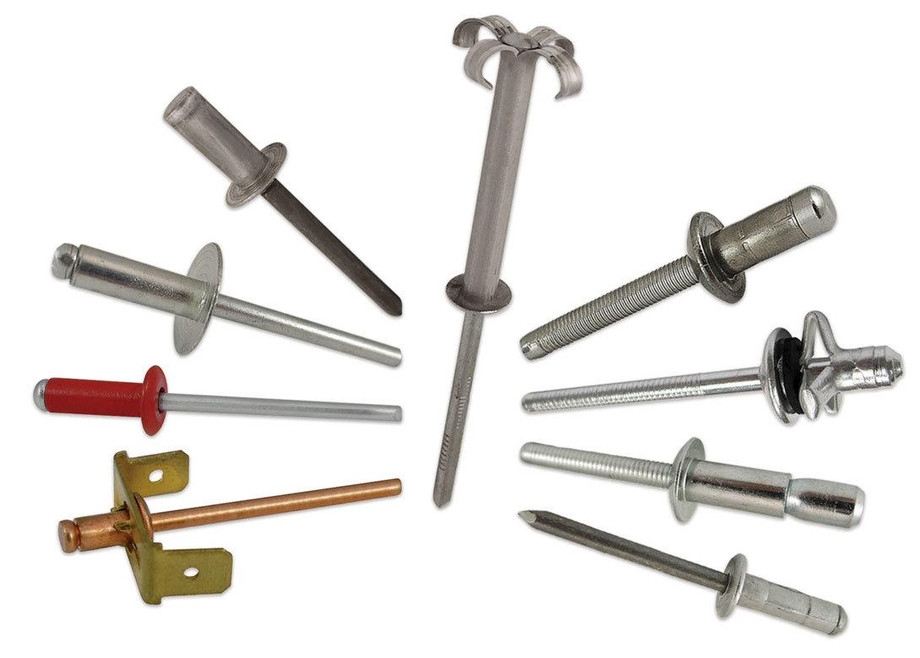Common Mistakes to Avoid When Using Rivet Nuts

Rivet nuts, also known as threaded inserts, are widely used in various industries for creating strong, reliable threads in thin materials. They are an excellent solution when dealing with sheet metal, composites, or plastic where tapping is not feasible. However, improper usage can lead to installation failures, reduced joint strength, and material damage. Here are some common mistakes to avoid when using rivet nuts to ensure a secure and durable connection.
1. Choosing the Wrong Rivet Nut
One of the most frequent mistakes is selecting an incorrect rivet nut for the application. Rivet nuts come in different materials, sizes, and styles, such as aluminum, steel, and stainless steel, each suited for specific environments. Using a weak rivet nut in a high-stress environment can result in premature failure.
Tip: Consider the material thickness, load requirements, and environmental conditions before choosing a rivet nut.
2. Incorrect Hole Size
Drilling a hole that is either too large or too small can lead to installation problems. A hole that is too large may cause the rivet nut to spin inside the material, while a hole that is too small can prevent proper seating and expansion.
Tip: Always refer to the manufacturer's specifications for the correct hole size to ensure a snug fit.
3. Improper Installation Technique
Using excessive or insufficient force during installation can lead to failure. Over-tightening can deform the rivet nut, while under-tightening may result in poor grip and eventual loosening.
Tip: Utilize a calibrated rivet nut tool and follow the recommended installation pressure for consistent results.
4. Skipping Material Compatibility Check
Using mismatched materials can lead to galvanic corrosion, especially in applications exposed to moisture or harsh environments. For example, pairing aluminum rivet nuts with steel components may accelerate corrosion and weaken the assembly.
Tip: Ensure material compatibility to extend the lifespan of the installation.
5. Failing to Consider Grip Range
Every rivet nut has a specific grip range, which determines the thickness of the material it can securely fasten to. Using a rivet nut outside its grip range can lead to improper installation and weak joints.
Tip: Verify that the rivet nut’s grip range matches the material thickness to achieve maximum holding power.
6. Not Using the Right Installation Tool
Manually installing rivet nuts without the correct tool can lead to inconsistent installation, improper deformation, and potential failure. While hand tools may work for small-scale applications, power tools are recommended for precision and consistency in industrial settings.
Tip: Use a dedicated rivet nut tool, whether manual, pneumatic, or hydraulic, for optimal results.
7. Ignoring Load and Torque Requirements
Rivet nuts are designed to handle specific load and torque values. Applying excessive force or failing to secure them properly can cause stripping or thread damage, reducing the effectiveness of the fastener.
Tip: Follow the manufacturer’s torque recommendations and ensure the rivet nut is installed correctly to withstand the required load.
Conclusion
Rivet nuts are an effective and versatile fastening solution, but avoiding these common mistakes is crucial for achieving a strong and durable connection. By selecting the right rivet nut, ensuring proper hole size, using the correct tools, and following installation best practices, you can prevent failures and maximize performance. Whether you’re working in automotive, aerospace, construction, or DIY applications, attention to detail in rivet nut installation will lead to a more reliable and long-lasting assembly
- Questions and Answers
- Opinion
- Motivational and Inspiring Story
- Technology
- Live and Let live
- Focus
- Geopolitics
- Military-Arms/Equipment
- Sécurité
- Economy
- Beasts of Nations
- Machine Tools-The “Mother Industry”
- Art
- Causes
- Crafts
- Dance
- Drinks
- Film/Movie
- Fitness
- Food
- Jeux
- Gardening
- Health
- Domicile
- Literature
- Music
- Networking
- Autre
- Party
- Religion
- Shopping
- Sports
- Theater
- Health and Wellness
- News
- Culture

